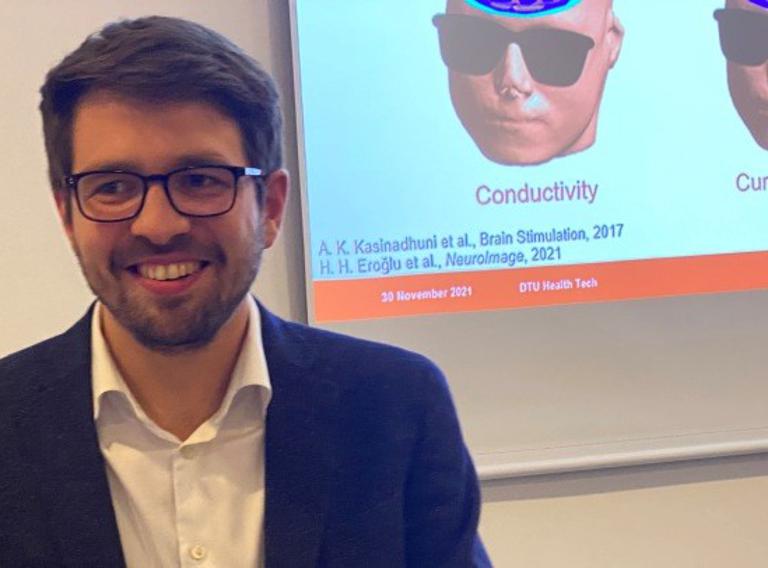

Ritgerðin snýr seg um at máta veikstreymsinduseraði magnetfelt í heilanum við einum MR-skannara.
Fróði Gregersen hevur skrivað ritgerðina sum part av samstarvi ímillum Danmarks Tekniske Universitet (DTU), Danish Research Centre for Magnetic Resonance (DRCMR) á Hvidovre Hospital og University of Chinese Academy of Sciences í Kina.
Lars G. Hanson, lektari á DTU og DRCMR, var høvuðsvegleiðari, meðan Axel Thielscher, professari á DTU og DRCMR, og Rong Xue, professari á University of Chinese Academy of Sciences, vóru hjávegleiðarar.
Í metingarnevndini vóru:
Murat Eyüboglu, professari á Middle East Technical University, Ankara
Ulrich Katscher, lektari á University of Applied Sciences, Hamburg
Vitaliy Zhurbenko, lektari á DTU Electrical Engineering
Koen Van Leemput, professari á DTU, var formaður í nevndini.
Eftir ritgerðina heldur Fróði Gregersen áfram í granskingarstarvi á heilsutekniska instituttinum á DTU og á DRCMR, skrivar gransking.fo.
Sí útgávur og annað her
Samandráttur av ritgerðini (á enskum):
Computational models of the electrical properties of the human head are increasingly used in neuroscientific research to estimate induced electric fields in non-invasive brain stimulation methods or to estimate the origin of signals measured by electro- and magnetoencephalography. However, the anatomical complexity of the human head makes accurate head modeling challenging. To create reliable head models it is important to validate their accuracy. A good candidate for non-invasive validation is magnetic resonance current density imaging (MRCDI). MRCDI uses an MR scanner to measure magnetic fields in the brain created by currents injected through the skull. Computational head models can be validated by comparing measured and simulated magnetic fields. MRCDI of the human brain is challenging since only tiny currents can be safely applied. The aim of this thesis was to improve MRCDI of the human brain. First, new MRCDI-optimal current injection electrodes were designed. With the new MRCDI-optimal electrodes, unwanted magnetic fields from currents flowing in the electrode leads were reduced. The second aim was to reduce the influence of physiological noise on the MRCDI measurements. This was achieved by designing faster MR imaging methods than previously used in MRCDI.
Kelda: gransking.fo


.png)


